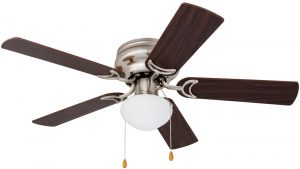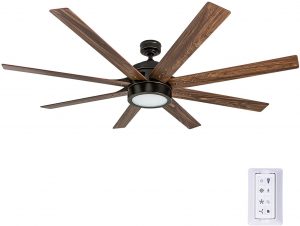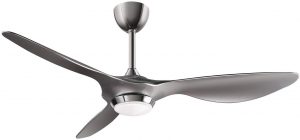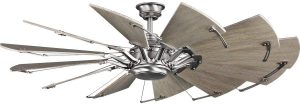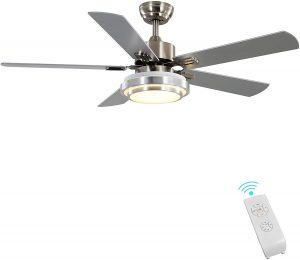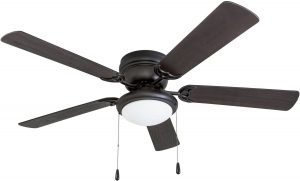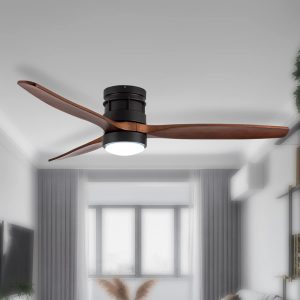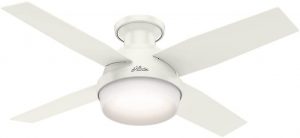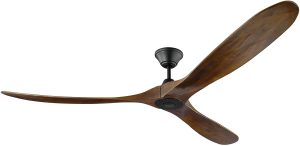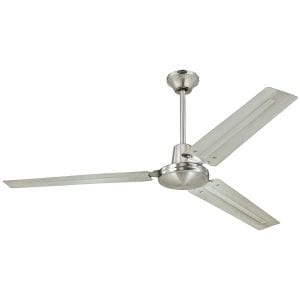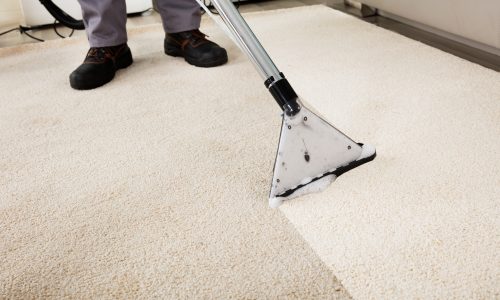The Best Ceiling Fans
We looked at the top 10 Ceiling Fans and dug through the reviews from 36 of the most popular review sites including and more. The result is a ranking of the best Ceiling Fans.
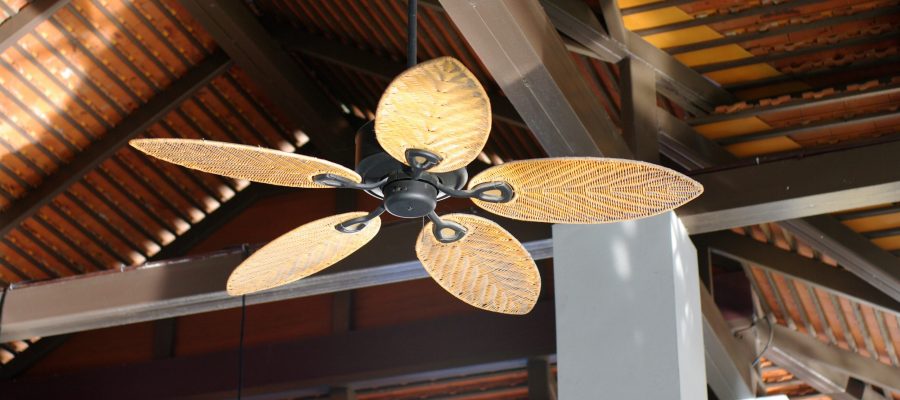
Our Review Process
Don't Waste Your Money is focused on helping you make the best purchasing decision. Our team of experts spends hundreds of hours analyzing, testing, and researching products so you don't have to. Learn more.
Our Picks For The Top Ceiling Fans
- 1. Prominence Home 80029-01 Alvina Low-Profile Ceiling Fan, 42-Inch
- 2. Honeywell Ceiling Fans Xerxes Remote Control Ceiling Fan, 62-Inch
- 3. reiga 6-Speed Remote Control Ceiling Fan, 52-Inch
- 4. Progress Lighting Springer P250000-081 Ceiling Fan, 60-Inch
- 5. FINXIN LED Remote Control Ceiling Fan, 52-Inch
- 6. Portage Bay 50251 Hugger Bowl-Light Ceiling Fan, 52-Inch
- 7. EKIZNSN Flush-Mount Outdoor Ceiling Fan, 52-Inch
- 8. Hunter Fan Dempsey Low-Profile Remote Control Ceiling Fan, 44-Inch
- 9. Monte Carlo 3MAVR70BK Maverick Outdoor Ceiling Fan, 70-Inch
- 10. Westinghouse 56-Inch Three-Blade Indoor Ceiling Fan
This unit moves a lot of air with relatively short fan blades. This smaller diameter makes it a good choice for smaller rooms, although the remote control works well even in larger ones. Even on high settings, the noise is kept to a minimum.
Quiet and CompactExpect plenty of performance from this smaller fan.
The basic look of this fan is industrial, but you can modify it to suit your room thanks to the reversible blades. The installation is relatively easy even though the unit is on the larger side. This one is a great fit for big rooms that need plenty of breeze.
Wide, Workhorse FanThe long blades and industrial look make a big impression.
The modern look isn't the only striking thing about this fan. Its three blades can move a surprising amount of wind around, especially on the higher settings. No matter which one you're on, the sleek design keeps noise to a minimum.
Silent But PowerfulThe sloping sides on the blades are great at sound dampening.
The fatter blades give this fan a windmill look, but the design isn't just for show. When properly installed, it runs smoothly with no wobbling — even on the higher speeds where it moves air efficiently throughout the largest of rooms.
Efficient DesignDesign is key in this smooth-running fan.
Buying Guide
If you enjoy the feel of a cool breeze on a hot day, you’re in the target market for a ceiling fan. And while fans do help to keep you cooler, that’s hardly the only reason to have them. They circulate the air around a room more evenly, which can help your air conditioner — and even your heating system — work more efficiently. Basically, if you’ve got four walls and a roof (or even just a roof), that space could be improved by adding a ceiling fan.
What kind of ceiling fan to buy depends on the room. Before you go picking a particular style or comparing efficiency, look at how big the fan is. Fan sizes are measured in inches, from the tip of one blade to the tip of the blade on the other side. Your main rooms are going to need a fan the most, and those are the living room, kitchen and master bedroom. Depending on the size of those rooms, you’ll want a fan somewhere between 50 and 60 inches. Smaller rooms like a home office or secondary bedrooms can usually accommodate fan sizes from 40 to 50 inches. There are fans smaller than 36 inches that work best for bathrooms or laundry rooms, while wide-open spaces like a patio or family room might call for one that’s 66 inches or larger.
It should go without saying that bigger fans generally get more wind moving, which means a cooler room. Of course, size isn’t everything. Fans are more effective when there’s a bit of room between the blades and the ceiling so that air has more room to circulate. At least 8-10 inches of space is optimal, but in rare cases that won’t be possible. You also want to make sure that your fan never gets lower than 7 feet from the ground, so in low-ceilinged rooms you may need to go with a unit that’s flush-mounted. If the ceilings are high, you can go the opposite route and get a downrod that extends the fan so that it can hang further down. (These aren’t always included with the installation kit, so check before you buy.)
Another detail to consider is the pitch of the fan blades. “Pitch” refers to the way that the blades are tilted, with a slight tilt producing less airflow than a severe one. For ceilings with a standard height of 9 feet, a pitch of 12-15 degrees is the sweet spot. Any less than that, and there won’t be much air movement. Any more, and your fan motor has to work harder (and usually louder) to counteract the wind resistance.
While we’re on the subject, quieter fans are always preferable unless a little white noise helps you sleep. If silence is a priority, look for models with sealed bearings.
After all those basics are covered, you can start looking for the bells and whistles that fans most prominently advertise: Remote controls with multiple speeds, adjustable lights, etc. And of course, the look of the fan is important. Brushed metal goes great with modern decor, and a wood finish helps warm up a more rustic area. (Just make sure that it’s treated wood if you’re putting that fan on an outdoor patio.)
Why we recommend these ceiling fans?
Products Considered
Products Analyzed
Expert Reviews Included
User Opinions Analyzed
Our experts reviewed the top 10 Ceiling Fans and also dug through the reviews from 36 of the most popular review sites including and more. The result is a ranking of the best of the best Ceiling Fans.
DWYM is your trusted roduct review source. Our team reviews thousands of product reviews from the trusted top experts and combines them into one easy-to-understand score. Learn more.
What to Look For
- Wobbly fans are a common problem, but it’s a problem that’s relatively easy to troubleshoot. Most of the time, that wobble is caused by one of the fan blades being out of balance with the rest. All you have to do is add a counterweight.
- Hardware stores and fan makers provide these weights in special balancing kits, but in a pinch you can just use small magnets (if your blades are metallic) or even attach a coin with a bit of glue.
- The first step is finding the unbalanced blade. Start by attaching a clothespin to any blade, halfway down the length of it. Turn on the fan and see if the wobble is worse or better. If it’s better, you’ve found the right blade. Move the pin up or down the blade until the wobble stops, then take the clothespin off and put a more permanent weight at the same spot.
More to Explore
Strictly speaking, fans don’t actually reduce the temperature of any room, no matter how fast they’re spinning. It’s the wind chill effect that makes you feel cooler when that breeze hits your skin.
Of course, all that is a moot point if it causes you to adjust your thermostat. It’s saving you energy either way.

